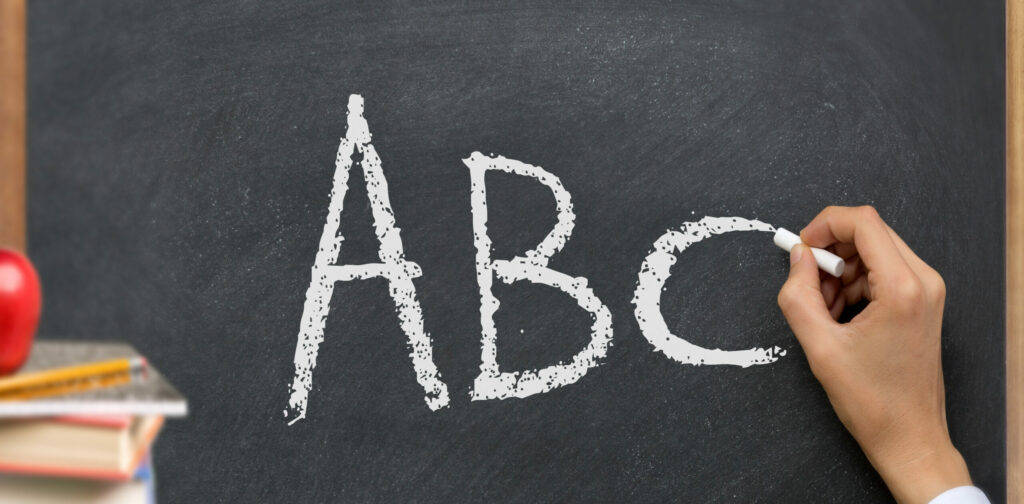
With 26 letters, the Portuguese language is spoken in several nations, among them Brazil. It is derived from the Latin alphabet, also called the Roman alphabet.
The alphabet of Portuguese can be classified into two groups: the vowel letters and the consonant letters. A vowel is the primary sound in a spoken syllable that is produced with the mouth open and without obstruction caused by the lips or tongue. In the Portuguese language, the vowel sounds are represented by the letters A, E, I, O, and U. On the other hand, a consonant is a sound produced in speech with a partial or complete closure of the mouth. The consonant letters in the alphabet are B, C, D, F, G, H, J, L, M, N, P, Q, R, S, T, V, X, and Z.

One unique feature of the Brazilian Portuguese alphabet is the inclusion of the letters K, W, and Y. These letters are not traditionally found in the Portuguese language, but they were added in 2009 to better accommodate foreign words and names. They may appear in some loanwords from other languages, particularly English.
The letter K is used in Brazilian Portuguese in some loanwords such as “ketchup”, “karatê” (karate), “kilo” (kilogram), and “king-size”. In these words, the letter K is pronounced as it is in English, with a hard “k” sound.
The letter Y is also used in some loanwords, such as “playboy” and “voyeur”, but it is not very common in Brazilian Portuguese. In these words, the letter Y is usually pronounced as it is in English, with a “y” sound.
The letter W is also used in some loanwords, such as “show” (pronounced “shou”), “whisky”, and “water” (pronounced “uóter”). In these words, the letter W is usually pronounced as it is in English, with a “w” sound.
Embarking on your Portuguese language learning journey? Start by learning with a tutor on italki and receive $10 USD italki credits by using this link.
Some links on this site are affiliate links, which means we may earn a small commission if you make a purchase using the link. This commission comes at no additional cost to you and helps to support the maintenance and development of this website.
Diacritical Marks
Diacritical marks are symbols placed above or below letters to indicate pronunciation, stress, or other linguistic features. The use of diacritical marks is common in Portuguese and other languages, and it is an important aspect of phonetics. Some of the most common diacritical marks are:
- Acute accent (´): used on vowels to indicate stress. For example, in the word “música” (music), the stress falls on the second syllable, which is marked with an acute accent.
- Circumflex accent (^): used on vowels to indicate a different pronunciation or stress. For example, in the word “você” (you), the stress falls on the last syllable, which is marked with a circumflex accent.
- Tilde (~): used on vowels to indicate nasalization. For example, in the word “pão” (bread), the tilde indicates that the “ã” sound is nasalized.
- Cedilla (¸): used under the letter “c” before the vowels “a”, “o”, and “u” to indicate a “soft” sound. For example, in the word “açaí” (a type of fruit), the cedilla indicates that the “c” is pronounced as an “s” sound.
Diacritical Marks
In Brazilian Portuguese, a digraph is a pair of two letters that are used to represent a single sound or phoneme. This means that when two letters are written together, they are pronounced as a single sound, not as two separate sounds.
Digraphs are important in Brazilian Portuguese because they allow the language to represent sounds that do not have a single-letter representation in the alphabet. They also help to differentiate between words that would otherwise be spelled the same way but have different meanings. Some common examples include:
| DIGRAPHS | SOUNDS |
| Lh | “lli” like in Brilliant |
| Nh | “ny” like in Canyon |
| Ch | “sh” like in Sheep |
| Rr | Guttural “r” |
| Ss | “ss” in classic |
Conclusion
Learning the Brazilian Portuguese alphabet is essential for anyone who wants to speak, read, and write the language fluently. It is the foundation of communication and the starting point for mastering the language’s grammar and vocabulary. With a good understanding of the alphabet and its unique features, learners can progress to more advanced levels of Portuguese and fully engage with Brazil’s rich culture and heritage.
Written by Ryan Chindavong, Filipe Laia
Wow, this is a super interesting article on the Brazilian Portuguese alphabet! I realize that I actually don’t know much about the Portuguese language at all. What are the differences between Brazilian Portuguese and Portuguese spoken in Portugal? Both Brazil and Portugal are countries I would like to visit in the future and it sure would be handy picking up words in Portuguese.
Portuguese from Brazil and Portuguese from Portugal are two different varieties of the Portuguese language. Although they share many similarities, they also have some significant differences. Brazilian Portuguese has a more nasal intonation, and some vowel sounds are pronounced differently from Portuguese from Portugal. Additionally, there are many words in Brazilian Portuguese that have different meanings or are not used at all in Portugal, and vice versa. Moreover, there are some grammatical differences between the two varieties. For example, “tu” and “você” are both pronouns used to address someone informally. However, “você” is more commonly used in Brazil, while “tu” is more common in Portugal and some regions of Brazil. So, if you were addressing a friend informally in Brazil, you would say “Você é meu amigo” (You are my friend). In Portugal, you would say “Tu és meu amigo”.
Despite these differences, speakers of Brazilian Portuguese and European Portuguese can generally understand each other; however, they may encounter some challenges.
Thanks for your comment; I hope you have the opportunity to visit both countries in the future!